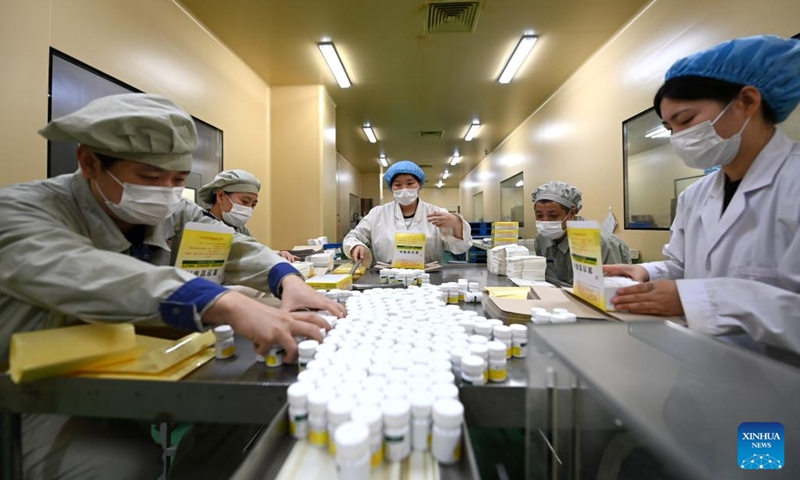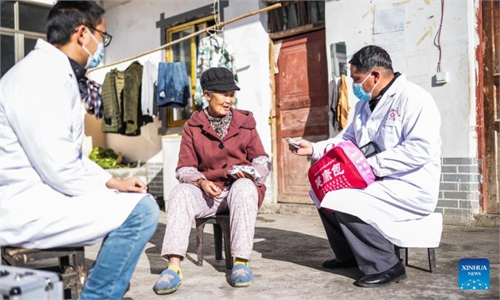Availability of medicines in China's rural areas should be maintained for more than 2 weeks: top rural administration

Workers pack medicine at a pharmaceutical company in north China's Tianjin Municipality on December 24, 2022. Pharmaceutical production lines in Tianjin are running at full capacity, increasing the market supply of medicine for COVID-19 symptoms. (Xinhua/Zhao Zishuo)
Governments and local health authorities at the grassroots level in China's rural areas are required to ensure the supply of materials in the areas, and the availability of medicines should be kept for more than two weeks, according to guidelines for COVID prevention and control in rural areas released by the national rural revitalization administration on Sunday.
Local authorities are also encouraged to organize villagers with cars to form voluntary transport teams to help residents with severe infections and other emergency medical conditions seek timely medical treatment when ambulances from medical institutions cannot arrive in time, read the guidelines.
As the country continues to optimize its epidemic responses, consistent efforts have been made to effectively coordinate epidemic control with economic and social development, especially in the more vulnerable rural areas.
Rural areas are weak links in the country's epidemic prevention and control as they cover vast regions, have huge populations and worse health care conditions than urban areas, according to a recent statement from the Ministry of Agriculture and Rural Affairs.
Efforts should be made in increasing the supply of medicines, equipment, manpower and funding in rural areas to ensure the supply of medical resources and improve medical treatment and intensive care, read the statement.
Epidemic prevention and control in rural areas is a key task for the country at the current stage, said Jiao Yahui, head of the National Health Commission's medical administration bureau.
"Hospitals in urban areas have established cooperation mechanisms with hospitals at the grassroots level, so that whenever there are severe patients in rural areas, they can be transferred to cities quickly," she said.
Township and village hospitals have been asked to conduct health monitoring on high-risk groups. Hospitals in urban areas as well as local health authorities should send experts and medical teams to rural areas and offer timely services to high-risk groups, Jiao noted.
Besides, township governments should also do a good job of epidemic prevention and control in key places, such as guiding people to wear masks properly and keep a safe distance at gatherings such as fairs and artistic performances, guidelines released by the national rural revitalization administration noted.
The Spring Festival, China's most important family gathering when tens of millions of people return to their hometowns, is a week away. With the optimization of epidemic prevention and control policies, it is expected that the number of such trips will double to more than 2 billion during the week-long holiday period in 2023, according to media reports.
The National Rural Revitalization Administration particularly reminded those returning to rural areas to report to local authorities in time, take personal protection, and reduce their participation in gathering activities in the early days of their return, especially reducing contact with key groups such as the elderly with underlying diseases.

